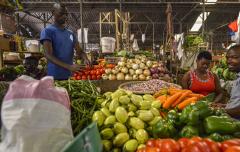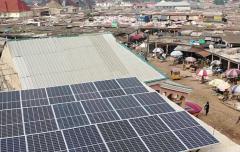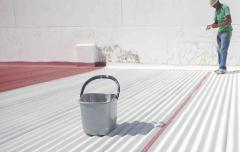More sustainable and efficient lighting delivers “triple win of economic, social and environmental benefits” - Partner Spotlight: Signify
We spoke with Head of Global Public & Government Affairs Harry Verhaar about Signify’s work in supporting SDG7, the importance of sustainable lighting access and how businesses must ‘walk the talk.’
What is the Signify mission?
We see the global transition to a carbon neutral world by mid-century as our common mission involving stakeholders from government, society and business combined. At Signify we have specifically defined our purpose as being “to unlock the extra-ordinary potential of light to create brighter lives and a better world.” When more sustainable – in our case, more energy efficient – solutions are available, they can provide a triple win of economic, environmental and social benefits. It is these benefits to communities and people that we are focused on. As these successes become better known, I believe it will help accelerate the transition that is currently happening too slowly.
How does the Signify support Sustainable Development Goal 7 (SDG7)?
We support SDG7 and Sustainable Energy for All from three angles. First, as a company we aim to show leadership in shaping the thought leadership and advocacy on what needs to happen on energy and climate change. An important element in this is to also ‘walk the talk,’ inspiring others to follow suit. The umbrella commitment and company program we have initiated and are working on is our commitment to become carbon neutral by 2020.
Our second key focus is to engage and work together within our sector. In the early days of our climate change program, we brought the lighting sector together and created the global lighting transition as a common goal. This was back in late 2003, early 2004. When at the end of 2006 we called for the global phase-out of incandescent light bulbs - the first mass electric appliance from the days of our (great)grandparents and in 2006 still accounting for two-thirds of our sales volume – lighting consumed 19% of global electricity. This call led to an acceleration in the lighting sector and a reduction of electricity consumption to 15% by 2015, the year of the Paris Climate Agreement, with a projection of further declines to 8% by 2030. By this time, this will represent an annual reduction of 1,400 megatons of CO2 emissions compared to ‘business as usual.’
Last but not least, we’re helping to shape required changes in what I call the energy efficiency domain, which is where we are a proud co-founder of the Global Energy Accelerator Platform, that runs under SEforALL, with the objective to double the annual rate of energy efficiency improvement towards 3% per year, a crucial requirement in staying below 2 degrees Celsius of global warming, called for under the Paris Agreement.
What do you see as the priority areas of SDG7 to help us meet 2030 targets?
All areas of SDG7, including energy efficiency, access to energy and renewable energy, are very important, with energy efficiency providing both a key and urgent contribution to support climate mitigation, as well as being a highly relevant success factor on the energy access and renewable energy fronts. After all, more efficient off-grid appliances make it more economical for people to access more sustainable energy services, and a stronger advancement of energy efficiency will also bring global renewable energy ambitions closer within reach.
What does your partnership with SEforALL focus on?
In our SEforALL partnership, we are a Delivery Partner of the Lighting Accelerator and a member of the Building Efficiency Accelerator program. Together, with the dedicated lighting team at UN Environment, there is still a lot of work to do in the lighting market transition in emerging and developing countries. One example is the country implementation of the UN Model Regulation that was launched a few months ago at the 9th Clean Energy Ministerial. We also contribute to energy access efforts by working together as a sector in the Global Off-Grid Lighting Association (GOGLA) that is approaching 150 members. GOGLA is working hard on solar-LED lighting product quality standards, policy frameworks, sustainable environmental practices and new business models that combined are aimed at enabling the current 1.1 billion people without access to sustainable energy to leapfrog to 21st century solutions. By having solar-LED lighting, this will allow communities, most of them rural, to pursue more economic activities, while also enabling their children to do homework in the evenings. The end result is more inclusive socio-economic development.
Can you describe your Better Lives, Better World program and its importance to SDG7?
Our Brighter Lives, Better World program manages a number of building blocks, the most relevant one being our program to become carbon neutral by 2020. Another objective is to grow to 80% green sales by 2020. We’re also moving towards zero waste to landfills as well as safe and healthy workplace and sustainable supply chain programs.
What are your strategies for reaching communities that live off-grid or are underserved by the grid?
Our strategy for leapfrogging from kerosene to solar-LED lighting is built on working as a sector through GOGLA, while as a company developing and offering a strong portfolio of solar-lanterns and solar home systems for residential and rural use, as well as solar-LED streetlighting for the vast amount of new urban and road infrastructure projected to be created in the coming decades. In parallel, we also have a Signify Foundation program that brings solar lights to a number of projects in schools and even refugee camps where people lack sustainable lighting or don’t even have light at all. Our dedicated foundation team also organizes training and capacity building so that these communities can do the maintenance and service work that is needed to keep these new technical solutions working.
All in all, as a global community, we face significant challenges. But the good news is that solutions exist, and by working together, we can make the difference that is needed to change the course of this world towards a more sustainable development pathway. This is not only the legacy we can leave behind for the next generations; it is also the gift that is ours to give at a time when it is most dearly needed.




